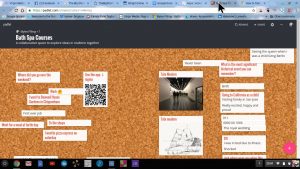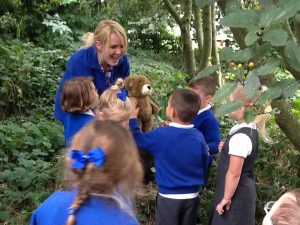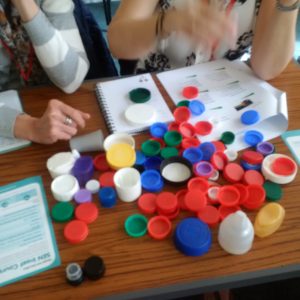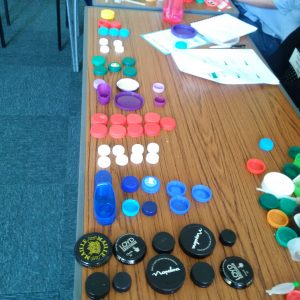 A day course for Educators, Support Staff and SENCos who have roles supporting learners with Social, Emotional and Mental Health (SEMH) difficulties and Social and Emotional difficulties (SEDs).
A day course for Educators, Support Staff and SENCos who have roles supporting learners with Social, Emotional and Mental Health (SEMH) difficulties and Social and Emotional difficulties (SEDs).
This training focusses on the role of all those with a position of coordinating, supporting a class, group interventions and/or individual children.
The aim of this course is to develop knowledge, skills and confidence in teaching and supporting pupils with Social and Emotional Difficulties. It highlights distinctive teaching and support strategies and promotes the importance of analysing, planning, and feedback between staff. It explores ways in which barriers to learning can be reduced and promotes consistent methods of support
When: Friday 20th January 2017, 9:15 – 3:30
Where: Best Western Oaklands Hall Hotel, Barton Street, Laceby, Grimsby, Lincolnshire, DN37 7LF
Cost £165 ex Vat per delegate – Parking, lunch and all refreshments are all provided. To reserve your place email enquiries@peoplefrsteducation.co.uk
Who:
Andrew Whitehouse MSpEd CPSE (PGCert) BAHons QTS

Andrew is a specialist in Neurological Disorders and provides therapy for: Attachment Disorders, ADHD, Autism, Asperger Syndrome, Dyslexia, Dyscalculia, Dyspraxia, Pathological Demand Avoidance Syndrome and related conditions. Andrew has a number of roles including training education professionals in schools and colleges, observing young people in the learning environment and providing intervention strategies, working directly with young people to help them achieve their potential.
As well as running networking day courses across the UK for SEN, Andrew provides short courses for Bishop Grosseteste University as well as holding a number of other UK contracts and outreach services including Norfolk, Harlow, Flintshire and Wakefield.
Andrew specialises in working closely with schools to raise standards, including most recently a mainstream school in Durham who had been graded as “requires improvement” by Ofsted. Following 25 months of intensive interventions they achieved “outstanding”.
Further afield he has provided hands on training events in Cork and Dublin and advised on a Special Schools project in The Kingdom of Saudi Arabia. Andrew is currently working on two projects for the United Arab Emirates and is preparing to travel to Belgium to work with British Schools overseas to provide Autism and ADHD interventions.
Andrew will be a Panellist and Speaker at http://www.educatedyorkshire.org/ and shall be speaking about: Tackling Mental Health – Setting a Strategy.
Watch Andrew’s video here:

Use of Padlet to collect student thoughts in real-time
I hear this idea coming out in conversations with parents of autistic children and their teachers. In the educational world of labels and acronyms it is easy to forget the one essential fact – all children are different, especially more so with autism. It’s my personal view that if we view ALL children as individuals rather than collections of needs
( “oh he has this challenging behaviour,” or he has “complex needs,” as if it absolves you of responsibility. He can’t help it attitude. “ It’s his autism”). Categories help to identify but not to be the excuse for the child’s behaviour or as a means of meeting the specific needs of each individual with that condition. Traits associated with a category of need can help us identify some commonaility amongst the category but that isn’t nearly going far enough into the whole of that child/pupil to speak something sensible and give practical to help that child.
One of the reasons for using ICT ( I prefer to keep the C for communication in as its important for teaching and learning in SEN) is that it can provide differentiation of activity as well as personalised learning. Useful as a communication tool or as an alternative to writing. Now we have in mobile technologies the integration of camera, sound, text and drawing in one small portable device that can fit in your pocket. Apps are available for all kinds of teaching and learning opportunities. But what is a good app? How do I know it is good? Help is at hand at https://aas123.com/online-reso urces/. There is an app database organised by category of need and skills so that progression can be planned. Do we want to use our bright shiny iPad just for Angry Birds? Or can we see its real potential for being a non-threathening, almost totally reliable tool every time you use an app that can record information easily. Also, ICT is a tool for demonstrating the potential of an individual if assessed and matched properly. The individual can show his ability, not his disability. In working with a specialist college for autism on the south coast we were able to see skills in the students that we had not seen before like computer programming and the use of green screen and multimedia to show passions, interests and acting skills ( or the lack of!!).
urces/. There is an app database organised by category of need and skills so that progression can be planned. Do we want to use our bright shiny iPad just for Angry Birds? Or can we see its real potential for being a non-threathening, almost totally reliable tool every time you use an app that can record information easily. Also, ICT is a tool for demonstrating the potential of an individual if assessed and matched properly. The individual can show his ability, not his disability. In working with a specialist college for autism on the south coast we were able to see skills in the students that we had not seen before like computer programming and the use of green screen and multimedia to show passions, interests and acting skills ( or the lack of!!).
In terms of classroom management and differentiation ICT can offer interactive ways for class and teacher to interact either through screen sharing apps like Padlet or through interactive quizzes and polls through free apps Nearpod, Socrative and SmartAmp ( for the Smartboard). These are not platform specific and can be used on any device. This means whether you use an Android, iPad or PC you can use the software, This allows each to have their say in real-time and has high engagement at its centre. In my mind that is what makes the difference between a disruptive child ( due to boredom and “ what’s the point I can’t do this anyway, I’m stupid” ) and a fully engage learning who is keen to share their ideas even the most shy and retiring of students would not be threatened by this approach. Plus it engages pupils at a higher level of thinking – topics such as “what has moved you most about your learning this year ?” or “ find out as much as you can about …… a historical figure, a well known public figure , or just some local person who you could interview! The possibilities are endless and not expensive – but you do need some kit! And then you may need some training! So what do you think?
Myles Pilling, Specialist SEND ICTConsultant, AccessAbility Solutions
Why?
At the end of each term we collate and analyse our behaviour records to find out who the key pupils are for support. Each term the same names appear in the “concern” list and each term we wonder what can we do for these children and what are we not doing for these children that they need?
This year we have had an epiphany! As we talked about these children, (100% are boys) we realised that their life outside of school would normally be spent outdoors; playing in the woods, seeing to the horses in the fields, riding bikes in the streets etc. It suddenly occurred to us that we were caging these boys- just like caged animals. They spend a lot of time outdoors yet we wonder why, when we pen them into a classroom, expecting them to sit for a whole lesson, they can’t cope and their behaviour worsens. So, we decided to change how we teach to support these children. What we have done has been simple to implement but the results are astounding!
What did we do?
We started the academic year with an INSET day exploring the theory behind Outdoor Learning. We explored our school grounds and looked for opportunities for learning and went on a whole staff ramble around the local area to see what was available to us on our doorstep. This got staff thinking and talking about the possibilities. The staff were set a task to plan, teach and review a lesson taught outside and “show and tell” their findings three weeks later in a staff meeting. Teaching assistants were assigned one child, from the “concern” list, each to observe during a classroom based lesson and then during an outdoor lesson and report their findings in the staff meeting. The staff took on the task with gusto.
What were the results?
At the “show and tell” staff meeting, staff came adorned with plans, children’s work, photo’s PowerPoints and scrapbooks. Each year group took turns explaining their lessons and findings. What was remarkable was the enthusiasm of the staff – they were animated, motivated and excited to share what they had done. There was a real positive vibe to the meeting.
What was the most telling were the observations of our key pupils. Teaching assistants were asked to identify words that best described their pupil during the indoor and outdoor lessons. The results were astounding.
Some examples of the observations are:
Pupil 1:Y6
Indoors: passive, shy, disruptive, lazy, lethargic and bored
Outdoors: enthusiastic, excitable, active, creative, curious, attentive, ambitious, hard working
Pupil 2: Y2
Indoors: lethargic, grumpy, reserved, bored, cheeky
Outdoors: curious, funny, loud, enthusiastic, animated
Pupil 3:Y3
Indoors: moody, rude, grumpy, bored, bad tempered, disruptive
Outdoors: active, creative, loud, funny, co-operative, team player, curious
Initial analysis of our behaviour records for September show a significant reduction in key pupils moving up our “Behaviour Triangle.”
The results speak for themselves. The staff were convinced it was the right move for our children.
What next?
Staff have committed to planning and teaching at least one outdoor lesson a week. However, it’s been difficult for them to keep to the minimum – they’re out nearly every day.
During October and November we start each staff meeting with a “Sharing good practice” session, where one year group per week tells everyone about an outdoor learning success story. During these sessions we talk about barriers we encounter and come up with solutions to them.
Throughout the Autumn Term, we have invited parents to join in with the outdoor learning with den building afternoons, dads and sons day- clearing brambles and nettles and a charity treasure hunt around the school grounds. Staff share photos with parents, of the children learning outdoors via our school messaging system. The majority of our school trips have had an outdoor focus.
In the Spring term we have planned another INSET day around outdoor learning but looking at how we can use this to improve writing across the curriculum as identified in our SIP.
Subject co-ordinators are looking at ways to bring outdoor learning alive in their curriculum areas and will share with staff in staff meetings, beginning with the core subjects.
The future?
The sky’s the limit!
Nicola




As you may know, last week we put on a Showcase Dyslexia training course for Parents and Autistic Children Together (PAACT) in Lincolnshire. This event was for Parents, carers, teachers and health professionals along with anyone else who has an interest in these subjects and was provided at a staggeringly reduced price of only:
£10 per delegate!
Following the success of this event, I am delighted to announce that we will be putting on a Dyscalculia training morning on:
Monday 26th September 10:00 till 12:30 at St Peter and St Paul’s church hall Skellingthorpe Road Lincoln.
If you are interested in attending please contact paactsupport@hotmail.co.uk
The cost of this workshops is a staggeringly low £10 per delegate.
Please send a cheque made payable to PAACT and send to Gordon Forsyth 4 Hatton Close Hartsholme Lincoln LN6 0BG. There is no booking form just your reply and cheque. Once Gordon has received both he will confirm your booking.
Dyscalculia Half Day Course
Strategies and interventions for young people with Dyscalculia, and or those with difficulties with recognising numeric concepts and related presentations.
This training will include:
- What is Dyscalculia: an overview of the different types of Dyscalculia and how it affects learning.
- Identification strategies: what to look for and key Dyscalculia presentations.
- Understanding conceptual difficulties present in young people with Dyscalculia and strategies to overcome these.
- Strategies and interventions to assist young people with Dyscalculia and make learning positive. This will include the use of visual and tactile resources and an overview of which of these resources to implement in specific circumstances.
- A vast range of short, practical workshops to help the delegate better provide interventions for their learners with Dyscalculia.
- Where next? Dyscalculia, development and the brain.

 Course outcomes:
Course outcomes:
- At the conclusion of this event, all attendees will:
- Have a deeper understanding of the Dyscalculic impairments .
- Better understand the needs of learners with Dyscalculia.
- Create age and level appropriate visual, kinaesthetic and numeric interventions using a range of tactile resources and interventions.
- Effectively intervene to empower the learner with Dyscalculia to enhance their ability to visualise numeric concepts.
Early, clear, and consistent presentation of rules is important for children because it sets expectations. This post includes ideas for successfully discussing rules in the classroom, home, and community.
- Start Early –Children often have difficulty reading situational cues on how to behave in a new environment. Prepare children in advance for new experiences such as going to the doctor, attending a show, or starting school. For example, classroom rules can be sent home for parents to review with children before term starts. Even if rules are not sent home, parents can prepare children for basic rules such as walking in a line, remaining in their seat during lessons, and listening to teachers. Teachers and support staff should set rules on the first day so children clearly understand expectations. Review what the rules are, where they are posted, consequences for not following the rules, and who to go to with questions about the rules.
- Present in an Age Appropriate Format – Depending on a child’s age and ability level, photographs, drawings, words, or a combination of these methods are ways to present rules. Position them in an easy to see, eye level location as a constant reminder. For new situations or difficult timetable transitions, use visual cards that remind children where they are going and what is expected. For example, when going to the library, show a picture, drawing, or a visual icon representing someone in the library following the rules. Use the visual to discuss voice, behaviour, and what happens whilst there.
- Be Consistent – Rules and expectations should remain constant. If a rule is children must clean up before going outside to play, consistently reinforce it. When children get mixed messages, they begin to believe rules are negotiable. Avoid this by consistently enforcing rules.
- Review Frequently – Children forget rules if they are not reminded of them. Discuss them on a regular basis (more often in a new situation or at the beginning of the school year) so children understand they are important. If the rules are positioned in an easy to see place and in a format they understand, children can look at them as needed.
- Communicate with Other People – If home and school rules are shared, they can be reinforced in other environments. Teachers should send school and bus rules home for parents to read and review with children. Parents should let teachers know what rules they adhere to at home. For example, rules about the use of certain words and specific behaviours in the home can be followed in the classroom. If families have specific concerns about rules, let teachers know so they can be followed in school. Additionally, share expectations between service providers such as teachers so that behaviours are reinforced across environments and children know everyone is working together.

Isnt the weather fab! Maybe you should go on a jolly. Read this first:
Family getaways create memories, teach children about new places, and provide an often much needed break. Unfortunately, some children have a difficult time with new situations, people, and timetables. This post includes ideas for making trips less stressful and more enjoyable before, during, and after.
- Prepare the child –Unfamiliar places and situations can be very stressful for some children. Prepare children for a trip by showing them websites, brochures, or guidebooks. Accommodation, activities, people involved, and transport are helpful for setting expectations. If you are on a train, bus or plane, discuss any security processes and social expectations (using an inside voice, wearing a seatbelt, keeping feet off the seat in front). Social Stories are good for this https://andrewwhitehouse.co.uk/training/social-stories-training/
- Involve children in the planning –If you are debating where to go, involve children in the decision. Research different trips and discuss the strengths and weaknesses of each place. Consider children’s interests in the decision. Because you loved the beach as a child does not mean your child who does not swim, sunburns easily, and finds the feel of sand upsetting will like the beach. Before going away, let children help pack their bags so that they know what they will have with them. Use this as an opportunity to discuss the weather and appropriate clothes for activities. Pack and have readily available a small bag of toys and books for car journeys, unexpected waiting periods, and relaxation.
- Retain familiarity –Consider children’s routines and familiar possessions when planning trips. Sleep routines may be difficult to follow, but keep wake up and bedtime as close to the child’s usual routine as possible. Familiar objects also help children with consistency. If a child reads a favourite story before bed, carries personal items in a backpack, or uses a stress ball, remember to pack these items.
- Keep the child in the loop –Many children benefit from very structured routines and the lack of a familiar routine on holiday can be upsetting. If children use written or visual timetables, create one for the holiday. Some children just need a verbal reminder of what to expect next or when to change activities. Many times consistently keeping children in the loop helps them relax and transition through the day.
- Remember to rota in some downtime –Families often over plan and cram things in. Spending time with friends and family, going from one location to another, or doing a number of things at one place can exhaust children. Plan rest periods so children can read, play a game, or sleep
- Create memories –Trips are fun and exciting, but children often forget some of it when they return home. Make a scrap book. Every evening discuss the day’s events and write or stick things in the book – pictures, tickets, leaflets etc. Read the book during the year to remember the experience, encourage communication, and plan future jollies.
 Andrew is one of those increasingly rare people who will stop everything at the drop of a hat to help and support you when times are really tough. Without much knowledge of me, when approached for help for my daughter who had severe mental health problems. Andrew was immediately reassuring, understanding, empathetic, easy to talk to and very supportive.
Andrew is one of those increasingly rare people who will stop everything at the drop of a hat to help and support you when times are really tough. Without much knowledge of me, when approached for help for my daughter who had severe mental health problems. Andrew was immediately reassuring, understanding, empathetic, easy to talk to and very supportive.
He gave me extremely valuable practical advice over the phone and by email and showed his professionalism and knowledge at every stage giving me hope at a very difficult time. Andrew made it clear that he was there for me 24/7 and once he had helped me over the immediate crisis with very apt advice he continued to be supportive and constantly gave me hope which was so valuable.
His intervention was the only thing that kept me going and for that I will be eternally grateful as will be my daughter and other family members.
Andrew has worked previously with my son, a headteacher, over special needs work which my son always greatly valued. It was indeed my son who suggested asking Andrew for help as he knew no one better for such a situation. I have no words sufficient to express my faith in Andrew or my gratitude to him and anyone lucky enough to be helped by him is indeed a fortunate person.
Yvonne, Dorset
Three Chances to attend Pathological Demand Avoidance (PDA)
Lincoln, Greetwell Place Monday 25th April
Gateshead, Premier Inn, Team Valley, Wednesday 6th July

Pathological Demand Avoidance (PDA)
Liverpool, Premier Inn, Albert Dock, Thursday 14th July
This training particularly focusses on the understanding that individuals with Pathological Demand Avoidance may communicate/present differently to neurotypical learners but can still achieve their potential with the implementation of appropriate interventions. Essentially, I want colleagues to see through the eyes of the learners as well as having the strategies.
The training will include:
Pathological Demand Avoidance (PDA) Training Course:
Strategies for the effective inclusion of learners with PDA: a day course, designed to successfully include learners with PDA and related conditions.
This fun, informative and effective workshop provides each delegate with a deeper knowledge and understanding of the needs of individuals with PDA and provides the skills necessary to create appropriate interventions.
What to expect on the training…
An overview of how the impairments affecting those with Pathological Demand Avoidance (PDA) may cause difficulties (What is PDA? The key features of PDA).
Meeting the needs of those with PDA. Some interactive activities and simple and effective strategies designed to meet a range of needs based on the impairments.
Strategies and interventions for adapting the sensory environment to meet the behavioural needs of individuals with PDA.
Why individuals with PDA need Visual Interventions and how they can benefit from them.
How to create a range of differentiated age and level appropriate Visual Interventions for individuals with PDA
An investigation into the type of language and presentation
suitable for the needs of individuals with PDA.
Promoting positive behaviour through effective practice
Course Outcomes:
This training is supported by case studies and workshop activities during which each delegate will learn to:
Understand the needs of individuals with PDA and the associated impairments.
Create differentiated, age and level appropriate interventions
Adapt the sensory environment to meet the needs of individuals and groups of individuals.
Create effective behavioural interventions and strategies
Only £165 ex vat
Places are extremely limited so please do get in touch now
so that you are not disappointed!
Book here:
https://andrewwhitehouse.co.uk/book-contact-2015/
Please note, refreshments, lunch and all handouts are provided.
Book here. When booking Pathological Demand Avoidance please check ASD box
My very best to you all
Andrew
Andrew Whitehouse MSpEd CPSE (PGCert) BAHons QTS
Director and Senior Special Educational Needs Consultant
|
|
A child’s immediate reaction to criticism or unkind words and actions can be inappropriate. Teaching children to respond to difficult situations with appropriate words and behaviours is difficult, but important for successful social interactions and relationships. This article includes strategies to help children think before acting.
Think about the Situation – Sometimes children misunderstand the jokes, comments, or actions of other people. Teach children to review situations and ask themselves questions. For example: Was the comment/action directed at me? Could it have been a joke? Is this person usually unkind or critical or could they be having a bad day? What did their body language say (i.e. Were they smiling as if joking? or Were they looking at someone else)? Was this person telling me about a rule or something to keep me safe?
Have a Strategy for Energy – If a child’s response to difficult situations is to act out physically, create a safe and appropriate way for them to use their energy. Squeezing a small stress ball in their pocket can relieve energy and give children something to focus on while thinking about the situation. If they need to take a break, teach them to take a short walk (going to the restroom, returning books at the library, walking the dog at home), push on a wall, or bounce on a trampoline if available. These strategies are positive ways to use energy while giving children time to review the situation and think of an appropriate response.
Have a Phrase Ready – Teach children to excuse themselves or respond to difficult situations with a set line that allows them to address the situation initially while remaining calm. A simple, ‘Excuse me,’ or ‘That wasn’t very nice’ are polite responses that allow the child to take a break, think about things, and determine an appropriate response to the situation. Discuss when and how to use the phrase. Also, take the time to practice this strategy so children are prepared when difficult situations arise.
Role Play – Model and practice responses to different situations with role play. Use examples of situations that may happen or already have happened. Practicing difficult situations when children are calm provides the opportunity to discuss options and consequences. Have children demonstrate the words and actions that are good responses to the situations. Example scenarios include: Someone pushing in; Being called a name; Someone bumping the child; A friend making a joke; Someone saying something about the child’s art work or how they play sports; A classmate taking something the child owns.
Stay in touch
Andrew

 may communicate/present differently to neurotypical learners but can still achieve their potential with the implementation of appropriate interventions. Essentially, I want colleagues to see through the eyes of the learners as well as having the strategies.
may communicate/present differently to neurotypical learners but can still achieve their potential with the implementation of appropriate interventions. Essentially, I want colleagues to see through the eyes of the learners as well as having the strategies.